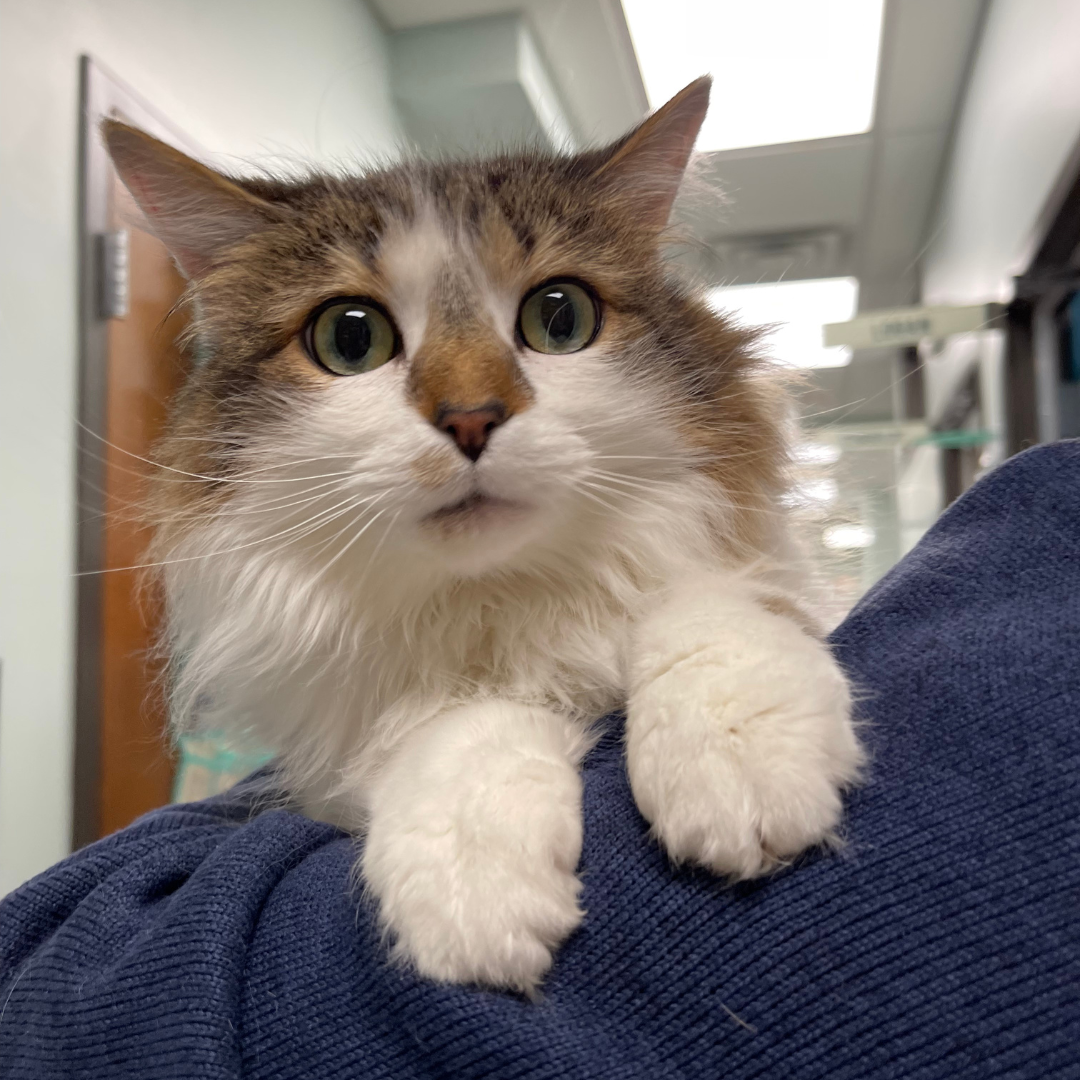Senior Visits 101
If your pet is in their senior years or soon approaching them, one of the best things you can do for them to extend their quality of life is to schedule a regular annual exam even if they aren’t due for a vaccine. It’s easier to prevent disease than to cure it!
Senior Visits 101
by Alyssa H., Veterinary Technician and Continuing Education Coordinator
Peer Reviewed by Dr. Sapato, BLVD Vet Logan Square Medical Director
When exactly do we consider a dog or cat a senior?
While cats have a fairly simple answer, over 10 years old, many begin to show age-related physical and metabolic changes as early as 7 years old. The answer for dogs is more variable. The lifespan of a Great Dane and the lifespan of a Chihuahua are very different! The general rule is the last 25% of your pet’s life expectancy is considered their “senior years.” For our giant dogs, senior years may be as young as 6-8 years old, and for our smaller toy breeds the answer is closer to 10-11 years old. Because there is such a wide variation, your pet will have an individualized senior care plan that is built to their specific needs. Regardless of breed or species, by 7 years of age our BLVD veterinarians will begin to discuss the transition to your pets’ senior years.
What is different about a senior exam?
Your veterinarian will still perform a full physical exam on your pet, regardless of age or species. Once your pet begins to enter their senior years, there are a few areas that your veterinarian will pay closer attention to, like annual lab work values and orthopedic exams.
Service we recommend for senior pets:
Annual blood work screens including complete blood counts,
Chemistry panels (including liver and kidney values, along with electrolytes)
Thyroid level checks
Urine analysis
Depending on these results, we may recommend more frequent or additional follow up testing. These diagnostics are strongly recommended for seniors because as our pets age, they are more likely to develop metabolic disorders like kidney disease and thyroid disease. By frequently monitoring blood values, our goal is to diagnose and treat these conditions before they become life threatening or even clinically symptomatic.
Oftentimes, trends are more important than a single value, so we recommend regular checks to establish a baseline (your pets’ “normal” levels) and monitor changes as they relate to your pet’s previous blood work results. It doesn’t hurt to start young to really know what their healthy adult baseline is or catch an early disease process! There are serious conditions that could have been avoided with early notice and just a change in diet.
Monitoring your pet’s mobility is also important, as aging is closely associated with increased arthritis and joint disease. They may not just be “calming down” with age, it could be mobility pain related. Did you know that 90% of cats over the age of 12 will show evidence of osteoarthritis on x-ray images? Luckily, there have been several advances in the medication we use to manage joint disease in both cats and dogs. Our doctors will complete a full orthopedic exam, including range of motion. Using both their exam and your evaluation of what your pet is like at home, they will work with you to create a treatment plan targeted at slowing the progression of joint disease, while keeping your pet’s comfort as the top priority.
We hope you find these tips useful and that they help keep your pets happy and healthy. Please let us know if we can help you take care of your senior pet!
Sincerely,
The BLVD Team





